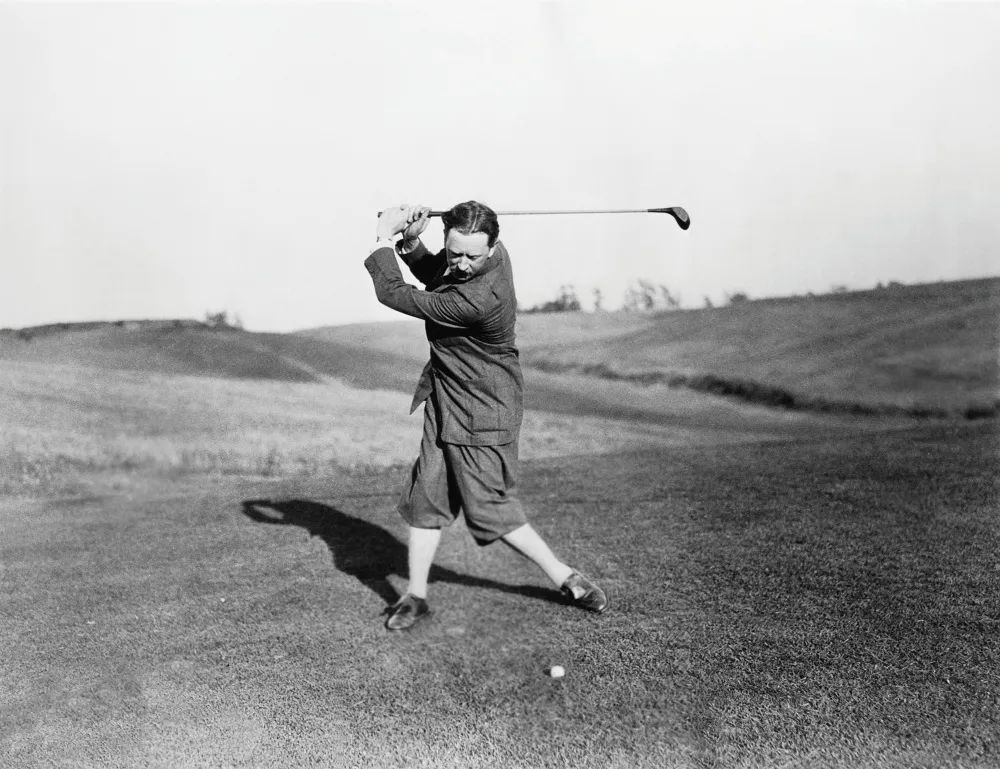
Physics on the Green
September 2022
by stephanie hobby
Legendary golfer Arnold Palmer once said, “Golf is deceptively simple and endlessly complicated; it satisfies the soul and frustrates the intellect. It is at the same time rewarding and maddening – and it is without a doubt the greatest game mankind has ever invented.”
We should all find some comfort in the fact that one of the best players of all time also found the game frustrating. Perhaps it’s because the goal is simple: to hit your ball far and straight and take as few shots as possible. It’s just you and the ball - there’s no one charging at you, and there’s nothing to distract you. But golfers can almost universally identify with Palmer’s sentiment. It is endlessly complex. Executing this (so-called) simple idea can confound even the most experienced golfers: we all know what it feels like to have a bad round. Some of us more often than others. Ahem. Blame science.
Aside from sports psychology, essentially, it all boils down to physics. (It’s for good reason that the ball has dimples - more on that in a minute.) At the most basic level, the goal is to find the most effective way to transfer energy from your body, down the club, to the ball, launching it off a tee. Ideally, all of this would connect to send the ball hurtling off in a straight line (and away from trees, sand, and weeds).
But because everything - from the back swing to the club head mass to the shaft flexibility to how you move your shoulders and hips - affects your performance, there’s a lot at play when you take to the links.
Hilands Golf Pro Eddie Kavran says one of the best things you can do for your game is to focus on your setup. Widening your stance can give your swing more power, as can forcefully pulling your opposite shoulder down as you’re hitting the ball. “Technique has so much to do with it. You can swing as hard as you want, but if you don’t have the right mechanics, then you’re not going to get the same result,” he said.
When you wind up for your back swing, you want to give yourself the longest possible pendulum. Think about opening a heavy door. You wouldn’t push on the center of the door because the door feels the lightest on the edge opposite the hinges. The longer the distance away from the center of rotation, the less force you need to move it. The same applies to golf.
“A taller person will hit it farther than a shorter person most of the time because the swing, the bigger the arc, the more power they can generate,” Kavran said, adding that slow-motion videos of professionals will often show that they swing so hard that their feet actually leave the ground.
The more you wind up and twist your shoulders while anchoring your hips, the more potential energy you’re storing to deliver a really powerful punch. Torque and centripetal force come into play here. Torque is the force that causes an object to rotate around an axis, such as pushing on a heavy door, so the longer the arc of your swing, the more energy you can deliver to the ball. The centripetal force causes an object moving on a curved path to continue that curved path, pulling inward. Swinging a tennis ball on a string above your head is one example of centripetal force at work - the ball continues on that curved path and doesn’t go wildly bouncing around. So when a golfer swings, the club head takes advantage of those principles to generate more power.
Another way to ensure a solid hit, builds on the double pendulum effect. We all know what a pendulum looks like, but if you hang another pendulum from that one, the lower pendulum becomes even more forceful. Think of your arms, from the shoulders to wrists, as one pendulum and the wrists to the club as another. You want to swing from your shoulders, but the club should also swing from your wrists.
Finding that sweet spot where these three principles work together is an ongoing challenge but delivers an amazing reward. Kavran emphasized that because each person has a different height, strength, and stroke, the best way to get the most out of your setup - and make sure you are building these concepts into your swing - is to schedule an evaluation with a golf instructor.
Finding the right club will also dramatically improve your game. Kavran says technology continues to improve, so if you have five-year-old clubs, you’ll notice a difference if you use one developed in the past year; different materials have lessened the weight and flexibility of the shaft, giving your swing yet another advantage.
Finally, a vital component of the game is the ball. When golf was first invented in the early 1600s in Scotland, the ball was perfectly smooth and made of wood. But players started noticing something interesting: the balls that had been scratched up or dented actually flew farther. This has to do with aerodynamics. As the ball flies, the air around it is forced out of the way. The airflow on a smooth ball is so streamlined that it creates a vacuum behind it. This creates a backward pull, known as drag, slowing the ball down. So, centuries and thousands of evolutions later, the modern golf ball has its signature dimpled cover and a core comprised of closely guarded industry secrets. The dimples increase turbulence, breaking up the air more effectively as it sails across the course. These tiny pockets increase air movement behind the ball, lessening that “vacuum,” reducing drag and sending the ball farther.
Whether you’re having the game of your life or spending your day in the weeds (no shame - we’ve all been there!), incorporating science can dramatically lower your score.
Originally printed in the September 2022 issue of Simply Local Magazine
Never miss an issue, check out SLM's digital editions here!





